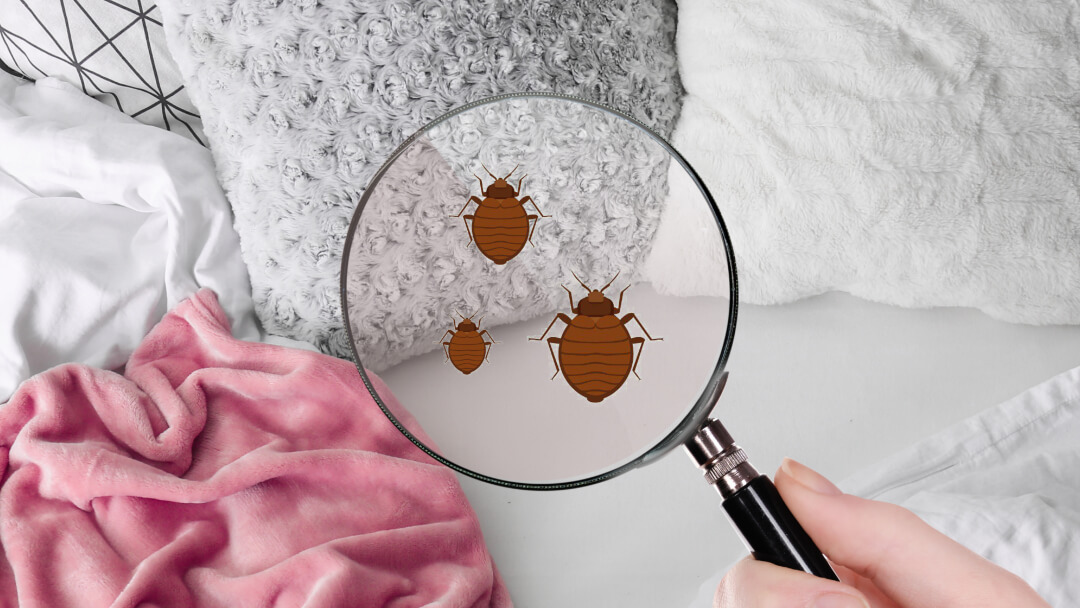Comprehensive A1 Bed Bug Extermination in Houston Location
Comprehensive A1 Bed Bug Extermination in Houston Location
Blog Article
Recognizing the Lifecycle of Insects for Targeted Control Strategies
Recognizing the lifecycle of insects is a basic facet of efficient bug administration approaches. Through a deeper understanding of just how pests progress and prosper, customized control techniques can be developed to resolve certain factors in their lifecycle, inevitably leading to even more effective pest monitoring outcomes.
Significance of Understanding Pest Lifecycle
Comprehending the lifecycle of bugs is crucial for developing reliable and targeted control techniques in parasite administration. By understanding the numerous phases a pest experiences from egg to adult, bug control experts can determine weak spots in the lifecycle where treatment can be most successful. Understanding when larvae are most energetic can help figure out the optimum timing for using larvicides. In addition, understanding the life-span of a pest species can assist in forecasting populace development patterns and prospective infestation dangers.
Furthermore, identifying the particular environmental conditions required for every phase of the insect's lifecycle can lead decisions on habitat alteration or exclusion techniques to interfere with the lifecycle and reduce pest populations. This expertise makes it possible for pest monitoring experts to execute proactive steps instead of relying only on reactive treatments, causing more sustainable and long-term parasite control remedies. Ultimately, an extensive understanding of insect lifecycles encourages insect control experts to customize their strategies effectively, reducing environmental effects and making the most of control results.
Trick Stages in Insect Advancement
To efficiently execute targeted control techniques in insect administration, a critical aspect exists in adequately identifying and understanding the essential phases in bug development. Bug growth generally consists of numerous essential phases that are vital for their lifecycle and administration.

Vulnerabilities in Parasite Lifecycle
Throughout the various stages of a bug's lifecycle, unique vulnerabilities emerge that can be tactically targeted for effective control steps. One important susceptability depends on the egg phase, where bugs are frequently extra vulnerable to specific pesticides or organic control representatives as a result of their soft external shell, making them simpler targets for treatment. Furthermore, the nymph or larval phase presents susceptabilities as pests go through quick growth and development, calling for high energy intake that can be exploited by interrupting their food sources or introducing development preventions. Pupal phases, identified by stability and makeover, supply a window for targeted control through physical obstacles or specific treatments that prevent effective emergence. Ultimately, grown-up insects, while extra durable because of their reproductive ability, can still be at risk throughout mating or egg-laying tasks, which can be interrupted via pheromone catches or sanitation techniques. Understanding these vulnerabilities in the pest lifecycle is necessary for creating efficient and specific control strategies that properly handle pest populations while minimizing ecological effect.
Executing Targeted Control Actions

Executing targeted control measures usually includes a multi-faceted method. This might consist of environment adjustment to make the setting less friendly to parasites, such as getting rid of standing water for mosquito control or sealing entry factors for rodents. Furthermore, biological control approaches can be made use of, where natural killers or virus are introduced to maintain bug populations in check.
Chemical control, such as the cautious application of chemicals, is another common approach. It is necessary to use these materials sensibly to lessen environmental influence and potential injury to non-target varieties - A1 Bed bug Exterminator houston. Integrated Parasite Monitoring (IPM) approaches that integrate numerous control actions in a collaborated and sustainable way are usually one of the most reliable in attaining long-term insect administration objectives. By carrying out targeted control steps based upon a thorough understanding of pest lifecycles, pest populations can be properly managed while lessening threats to human health and the setting.
Improved Parasite Management Practices

Moreover, the consolidation of organic control representatives, such as all-natural predators or virus of insects, can help in reducing reliance on chemical pesticides and advertise a more well balanced ecosystem. Executing physical obstacles and traps can also belong to boosted insect administration techniques, providing non-toxic and targeted solutions for parasite control. In addition, the usage of pheromones and other semiochemicals can interfere with pest breeding patterns and interaction, bring about lowered parasite populaces with time.
Final Thought
In verdict, recognizing A1 Bed bug Exterminator houston the lifecycle of insects is vital for efficient pest monitoring strategies. By determining key phases in pest advancement and susceptabilities in their lifecycle, targeted control measures can be executed to reduce pest populations. Enhanced bug administration methods can aid decrease the dependence on broad-spectrum chemicals and advertise more lasting and eco-friendly pest control methods. This expertise plays a crucial role in preserving healthy ecosystems and agricultural efficiency.
Comprehending the lifecycle of parasites is crucial for creating reliable and targeted control methods in bug monitoring. By understanding the various phases a pest goes through from egg to grownup, pest control experts can identify vulnerable factors in the lifecycle where treatment can be most successful. Ultimately, a thorough understanding of pest lifecycles empowers parasite control practitioners to tailor their approaches properly, minimizing environmental influences and making the most of control end results.
By applying targeted control measures based on an extensive understanding of bug lifecycles, parasite populations can be efficiently managed while lessening risks to human health and the atmosphere.
By identifying vital phases in bug growth and susceptabilities in their lifecycle, targeted control actions can be applied to minimize bug populations.
Report this page